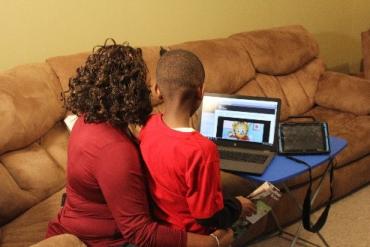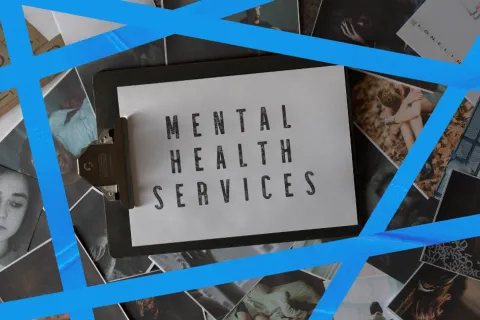Questions and answers about ABA
Applied Behavior Analysis (ABA) is one of the most common interventions for people with autism, but much of the information available about it online is outdated or contradictory. This opens the door to confusion about its usefulness, in part because the therapy varies so widely and is typically geared towards children. The fact is there is no one ABA—it is a highly individualized therapy that looks different for every person and practitioner.
Here, Arianna Esposito, Board-Certified Behavior Analyst (BCBA), shares information about what to expect from ABA, its methods, and its impact on autistic people across the lifespan.
What is the purpose of ABA therapy?
ABA is a therapy based on the science of learning and behavior. It is typically used to help people with autism and other developmental disorders learn behaviors that help them live safer and more fulfilling lives.
ABA focuses on teaching necessary skills and stopping dangerous behaviors rather than preventing harmless self-stimulatory behavior (stims).
Therapists work with autistic people to improve skills like:
- Communication and language abilities
- Social skills
- Self-care and hygiene routines
- Play and leisure skills
- Motor abilities
The goal is not for someone to appear neurotypical. The goal is for their life to be improved in a way that is meaningful to them.
There are many evidence-based treatments based on ABA principles. No one therapy or intervention will be effective for every person.
Common behavioral interventions include:
- Early Intensive Behavioral Intervention (EIBI) - A school, center or home-based therapy for children under the age of 5 that is effective for developing functional skills and communication.
- Early Start Denver Model (ESDM) – An approach for children between the ages of 12 to 48 months that is effective for developing communication and cognitive skills.
- Joint Attention, Symbolic Play, Engagement & Regulation (JASPER) – A model for children between 12 months to 8 years old that is effective for improving play and communication skills.
- Natural Environment Teaching (NET) - Designed for children aged 2 to 9, this therapy is effective in reinforcing language, play and social skills in the natural environment.
- Pivotal Response Treatment (PRT) – A play-based and child-initiated therapy that is effective for communication, self-management and social behaviors.
These approaches all fall under the umbrella of ABA, and people usually receive a combination of interventions. For example, a therapist may work with a client in ABA therapy to develop language skills using the EIBI approach for a short period of time and then move to NET to practice the skills in a more natural environment. In all cases, ABA therapists should work with their patients and their families to set goals and choose interventions based on each patient’s unique strengths, needs and desired outcomes.
While many ABA therapies are shown to be effective for young children, ABA interventions can also help autistic adolescents and adults learn greater independence or limit harming behaviors.
What does ABA therapy do?
ABA treatment approaches are not one-size-fits-all. Plans are designed by a qualified BCBA who evaluates the autistic person’s unique needs, skills, preferences, interests, challenges and family situation.
The BCBA uses this information to create goals and an intervention plan. This plan is then delivered by a licensed professional, such as a registered behavior technician (RBT) or board-certified assistant behavior analyst (BCABA). Generally referred to as a behavior therapist, this is the person who usually runs the therapy sessions, with guidance from the BCBA.
In therapy, the BCBA works with the autistic person and their care team to identify a goal and break it down into small parts.
For example, learning to wash hands may be broken down into these steps:
- Turning on the faucet
- Wetting hands
- Picking up the soap
- Lathering hands
- Rinsing hands
- Turning off the faucet
- Drying hands with a towel
Each step that is performed successfully is followed by a positive response, such as a reward or natural reinforcer in the environment. Unwanted behaviors are generally ignored and the person is redirected toward the practice skill. Rewards differ depending on the person and their interest, but can include things like praise, a toy or book, or TV time. Positive reinforcement and repetition are the main tools of ABA practitioners. Punishment should never be used as a tool to draw out a desired behavior.
Progress is measured by collecting data in each therapy session. The therapist regularly meets with family members to review information about progress. If the patient does not show progress, the ABA therapist can adjust teaching plans as needed.
How can ABA help with behaviors that are harmful or destructive?
ABA is often used to help autistic children and adults cope with harmful or dangerous behaviors. The therapy usually begins by identifying the unsafe behavior, learning about the trigger(s), and then teaching a safer alternative response.
For example, if someone bangs their head frequently and is injuring themselves, the therapist begins by trying to understand the cause of the behavior.
Some questions may include:
- Who was present?
- What happened before, during and after the behavior?
- When did it happen?
- Where did it happen?
- What might that person be trying to communicate with that behavior?
The answers to these questions can help therapists understand what is causing someone to engage in the behavior and how to help them communicate their needs more safely. The therapist might find that it is a response to pain, overstimulation, frustration due to communication issues, or a way to avoid an unpleasant situation. Importantly, the behavior may have more than one cause and may serve more than one function.
In this example, the therapist may find that the behavior happens in loud environments and that the head-banging serves two purposes:
- It is a way for the person to communicate that they are overwhelmed and need a quiet place to calm down.
- It causes their family to remove them from the situation.
The therapist can then work with the person to teach them safer ways to ask for or get quiet time. For example, the person may learn to use noise canceling headphones or go to a quiet room when they feel overstimulated. They can also learn to use or point to the word “loud” so they can better communicate their needs with the people around them.
In this way, ABA therapy can help keep someone from harming themselves by teaching healthy communication skills and strategies that they can use to get what they need.
It is important to note that ABA therapy should focus on the needs that the autistic person is trying to meet and teach ways to have those needs met safely.
How can ABA be applied throughout the lifespan?
ABA is effective for people of all ages. While therapy looks different in young children versus adolescents and adults, the principles remain the same. ABA can help adults achieve goals that they want to work on. These might include:
- Strategies for coping with waiting
- Using public transportation
- Other skills to help them be more independent at home, in the community or at work
Because autistic people past age 14 often have difficulty getting funding for formal ABA therapy through their private insurance, adults usually utilize ABA principles more casually in their everyday lives. For instance, someone learning to greet others by saying "hello" may practice this skill in the grocery store and on a walk in the neighborhood rather than in a clinic. Similarly, a mother using positive reinforcement to teach her son how to get to work on a public bus is using ABA principles.
Without as much in-clinic support, parents, family members and caregivers often play a more active role in ABA-based learning for this age group. The key is for the person to get rewarded for their efforts with positive reinforcement, either from a therapist, family member or the environment.
How can families embrace ABA principles to help the autistic adults in their lives achieve their goals?
- Work together to understand the goals or skills they would like to work toward.
- Encourage independence by prompting them to complete tasks by themselves, using verbal, visual and physical prompts as needed.
- Break down tasks into small steps. Use picture prompts or other communication supports if needed to show each step.
- Spend time working with the person on their goals every day. Practice the same activity several times until it’s mastered.
- Reward positive behaviors and ignore and redirect negative behaviors.
- If you observe harming behaviors developing, get in touch with the person’s care team. Specialists can help look at these behaviors more closely to understand the root causes and set goals around those needs to keep them safe.










